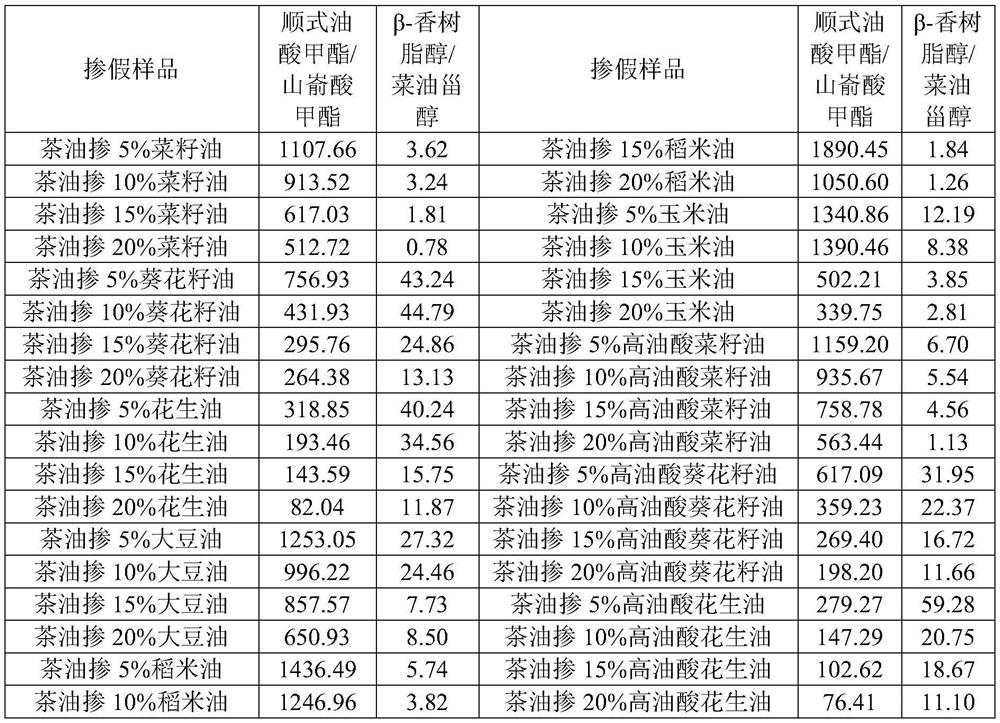Camellia oleosa seed oil adulteration detection method based on oleic acid/behenic acid and beta-amyrin/campesterol ratios
A technology of camellia oleifera seed oil and balsamol, applied in measuring devices, instruments, scientific instruments, etc., can solve the problems of lack of quantitative indicators, failure of fatty acid discrimination indicators, rough qualitative analysis, etc.
- Summary
- Abstract
- Description
- Claims
- Application Information
AI Technical Summary
Problems solved by technology
Method used
Image
Examples
specific Embodiment
[0035]Collect 15 pure oil samples of camellia seed oil from different producing areas such as Hunan, Guangxi, Jiangxi, and choose one of the pure camellia seed oil samples for adulteration sample design (that is, pure camellia seed oil mixed with 10% and 15% respectively, 20% by volume of peanut oil, soybean oil, rapeseed oil, sunflower oil, rice oil, corn oil, high oleic rapeseed oil, high oleic peanut oil, high oleic sunflower oil); according to the aforementioned invention of the present invention The method of content The above-mentioned pure oil sample of camellia seed oil and the adulterated oil sample are respectively subjected to methyl esterification treatment, and the original fatty acids of the pure oil sample of camellia seed oil and the adulterated tea seed oil sample are collected by gas chromatography and mass spectrometry technology Fingerprint: Use the normalized area method to quantify the main fatty acids from the collected original fatty acid fingerprints, and ca...
PUM
 Login to View More
Login to View More Abstract
Description
Claims
Application Information
 Login to View More
Login to View More - R&D
- Intellectual Property
- Life Sciences
- Materials
- Tech Scout
- Unparalleled Data Quality
- Higher Quality Content
- 60% Fewer Hallucinations
Browse by: Latest US Patents, China's latest patents, Technical Efficacy Thesaurus, Application Domain, Technology Topic, Popular Technical Reports.
© 2025 PatSnap. All rights reserved.Legal|Privacy policy|Modern Slavery Act Transparency Statement|Sitemap|About US| Contact US: help@patsnap.com


